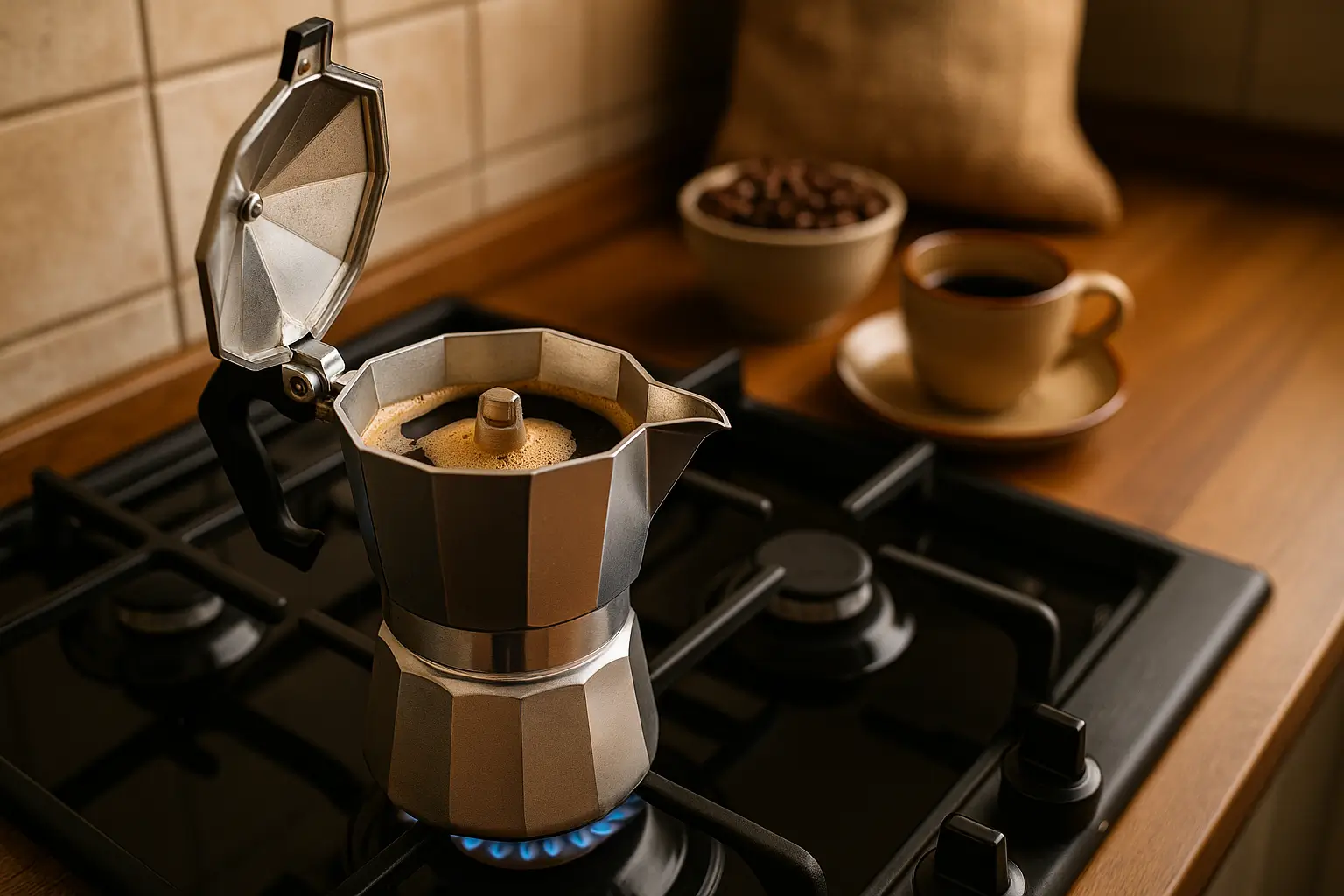The Moka pot, also known as a stovetop espresso maker, is a timeless brewing device loved by coffee enthusiasts worldwide. Invented in Italy in the 1930s, it offers a rich, bold coffee that mimics espresso—without needing expensive equipment. In this guide, you’ll learn everything from how it works to step-by-step brewing, cleaning, and pro tips to elevate your Moka pot game.
What Is a Moka Pot?
A Moka pot is a stovetop coffee maker that brews coffee by passing boiling water pressurized by steam through ground coffee. It consists of three parts:
- Bottom chamber (for water)
- Middle funnel (coffee basket)
- Top chamber (where brewed coffee collects)
Made primarily of aluminum or stainless steel, the Moka pot is especially popular in Europe and Latin America for its ability to create a strong, aromatic brew.
Why Choose the Moka Pot?
- Affordable alternative to espresso machines
- Compact and travel-friendly
- Produces bold, rich coffee
- No need for paper filters
- Durable and long-lasting
It’s ideal for coffee lovers who enjoy espresso-style drinks but want a more hands-on and traditional approach to brewing.
Step-by-Step: How to Brew with a Moka Pot
What You’ll Need:
- Moka pot (clean and dry)
- Fresh coffee beans
- Burr grinder
- Hot water (optional but recommended)
- Stove or induction plate
- Spoon and towel
Step 1: Grind Your Coffee
Use a burr grinder to grind your beans to a medium-fine consistency—finer than drip coffee but coarser than espresso. Too fine, and you’ll clog the filter; too coarse, and your coffee will be weak.
Step 2: Add Water to the Bottom Chamber
Fill the bottom chamber with hot water up to the safety valve. Using hot water speeds up the brewing process and prevents the grounds from overheating.
Tip: Avoid covering the valve for safety.
Step 3: Fill the Coffee Basket
Fill the funnel with ground coffee up to the top, leveling it off without tamping. Tamping can increase pressure and cause overflow or damage.
Step 4: Assemble the Pot
Carefully screw the top and bottom chambers together. Use a towel if the bottom is hot. Ensure a tight seal to avoid leaks.
Step 5: Heat on the Stove
Place the Moka pot over medium-low heat with the lid open. You’ll hear a gurgling sound as water rises through the coffee into the upper chamber.
Remove from heat as soon as the top is full and the gurgling subsides—overheating can cause bitterness.
Step 6: Serve and Enjoy
Stir the coffee in the top chamber before pouring to ensure even flavor. Serve in a demitasse or espresso cup, or use it as a base for drinks like lattes and cappuccinos.
Cleaning and Maintenance
To keep your Moka pot in great condition:
- Rinse immediately after each use with warm water—no soap
- Avoid the dishwasher unless it’s stainless steel and labeled safe
- Let all parts dry completely before reassembling
- Check and replace gaskets as needed (usually every 6–12 months)
- Descale periodically with vinegar and water if you notice mineral buildup
Avoid letting old coffee oils sit in the pot—they can affect the taste over time.
Common Mistakes to Avoid
- Using cold water: Leads to over-extraction and bitterness
- Overfilling the basket or tamping grounds
- Using too much heat: Causes burnt flavors
- Not cleaning regularly: Results in off-flavors or stuck valves
- Grind too fine: Can block water flow or create pressure issues
Taste Profile: What to Expect
Moka pot coffee is:
- Strong and intense, similar to espresso
- Often with a rich body and deep aroma
- May have slight bitterness depending on roast and technique
- Less crema than espresso but with a robust, satisfying finish
It’s a favorite for milk-based drinks and bold coffee lovers alike.
Variations and Advanced Tips
- Preheat water to reduce bitterness
- Use filtered water for better clarity
- Try different beans (single-origin or blends) to explore flavor profiles
- Pour into a warmed mug to preserve temperature
- Add a small amount of salt or sugar to the grounds for unique taste tweaks (optional)
Some experienced users even “flip” the Moka pot upside down or place it in cold water immediately after brewing to stop extraction and control flavor.
Final Thoughts: Mastering the Moka Ritual
The Moka pot is more than just a coffee maker—it’s a tradition. From the hiss of steam to the rich aroma that fills your kitchen, every part of the process is immersive. With the right grind, water temperature, and care, you can brew café-quality coffee at home for a fraction of the cost.
Whether you’re a seasoned barista or just starting out, learning to master the Moka pot will elevate your appreciation for coffee—and every cup will feel like a crafted experience.
